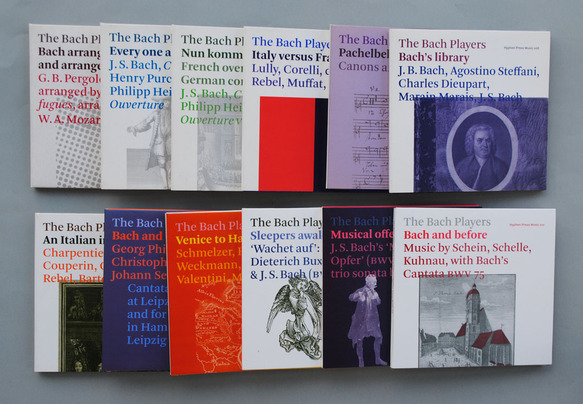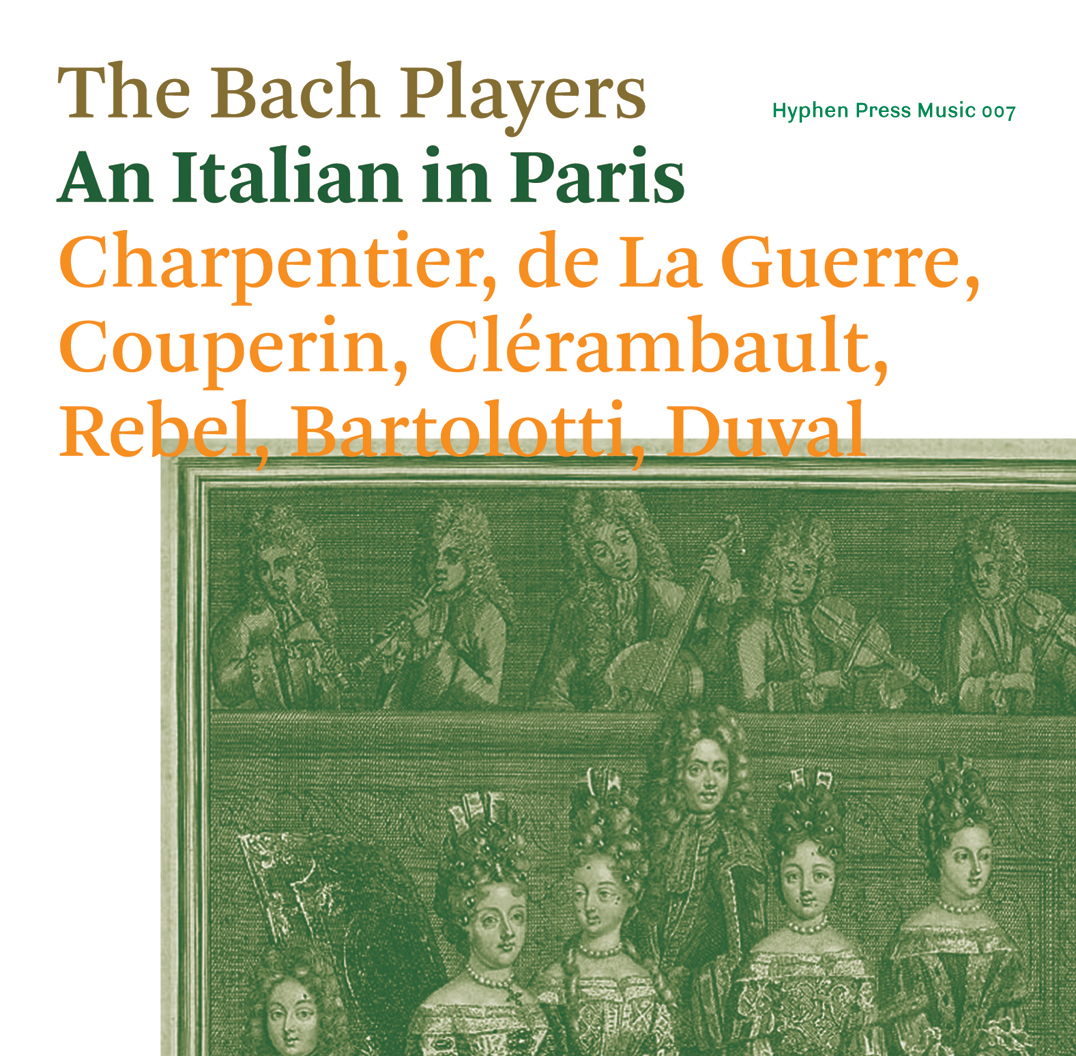
An Italian in Paris
The Bach Players
In France at the end of the seventeenth century Corelli’s influence was enormous. The more rational, formal French style had been dominated by Lully; French composers had to admit secretly to liking the more emotional Italian style. This rich banquet of private music composed for Louis XIV shows the first experiments in France with the Italian style. The disc concludes with what has been claimed as the first French sonata, an extraordinary work composed by Charpentier for eight instruments.
Find out more and buy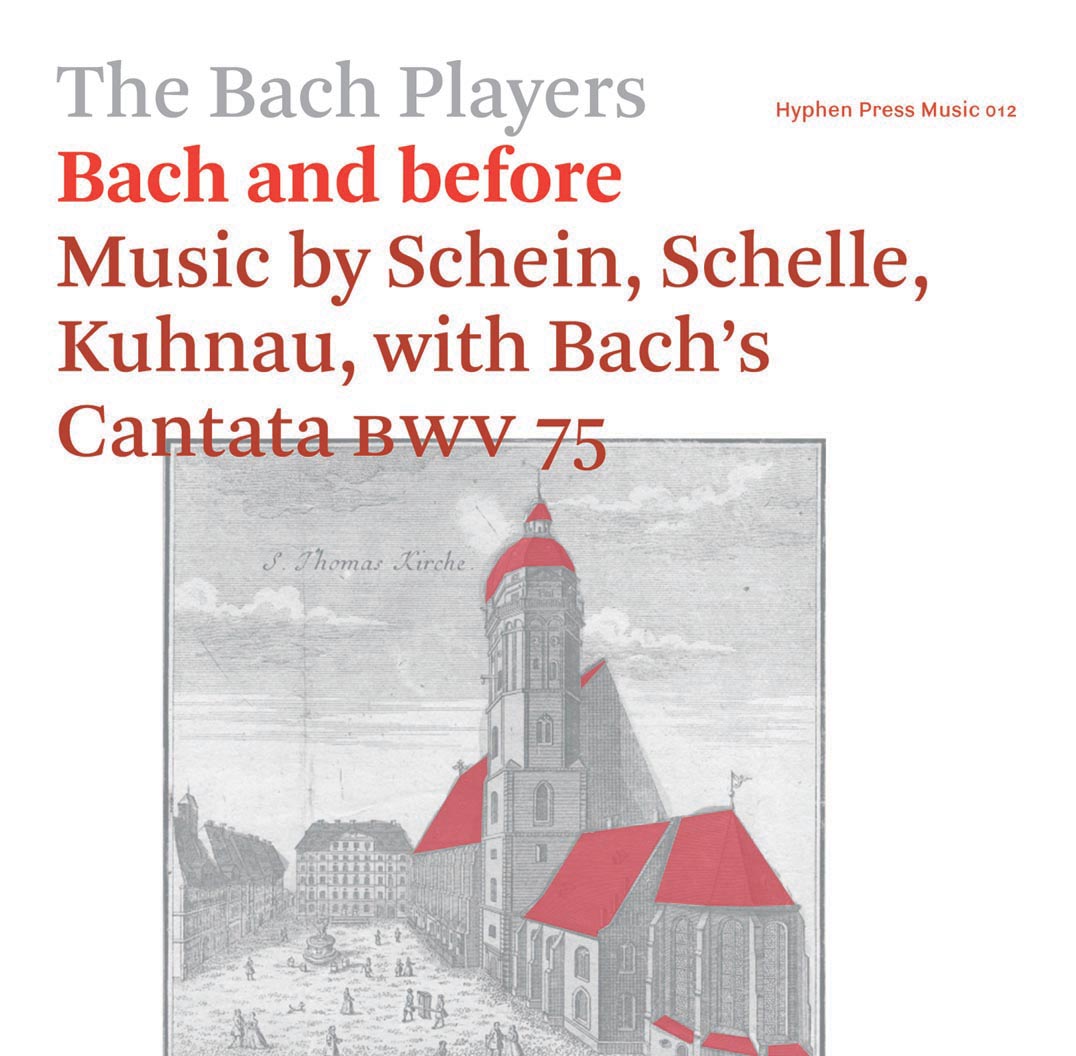
Bach and before
The Bach Players
When J.S. Bach was given the post of Kantor at the Thomasschule in Leipzig he joined a long line of musicians in this position, among them Schein, Schelle, and Kuhnau. This disc provides recordings of their treatments of texts that Bach would also set, and demonstrates the extraordinary strength and beauty of German church music of those times. It concludes with the first cantata that Bach wrote after his Leipzig appointment. ‘Die Elenden sollen essen’ is a master-work, notable for its virtuosic trumpet part. This is a show-piece, and a fitting debut for his work at St Thomas’s.
Find out more and buy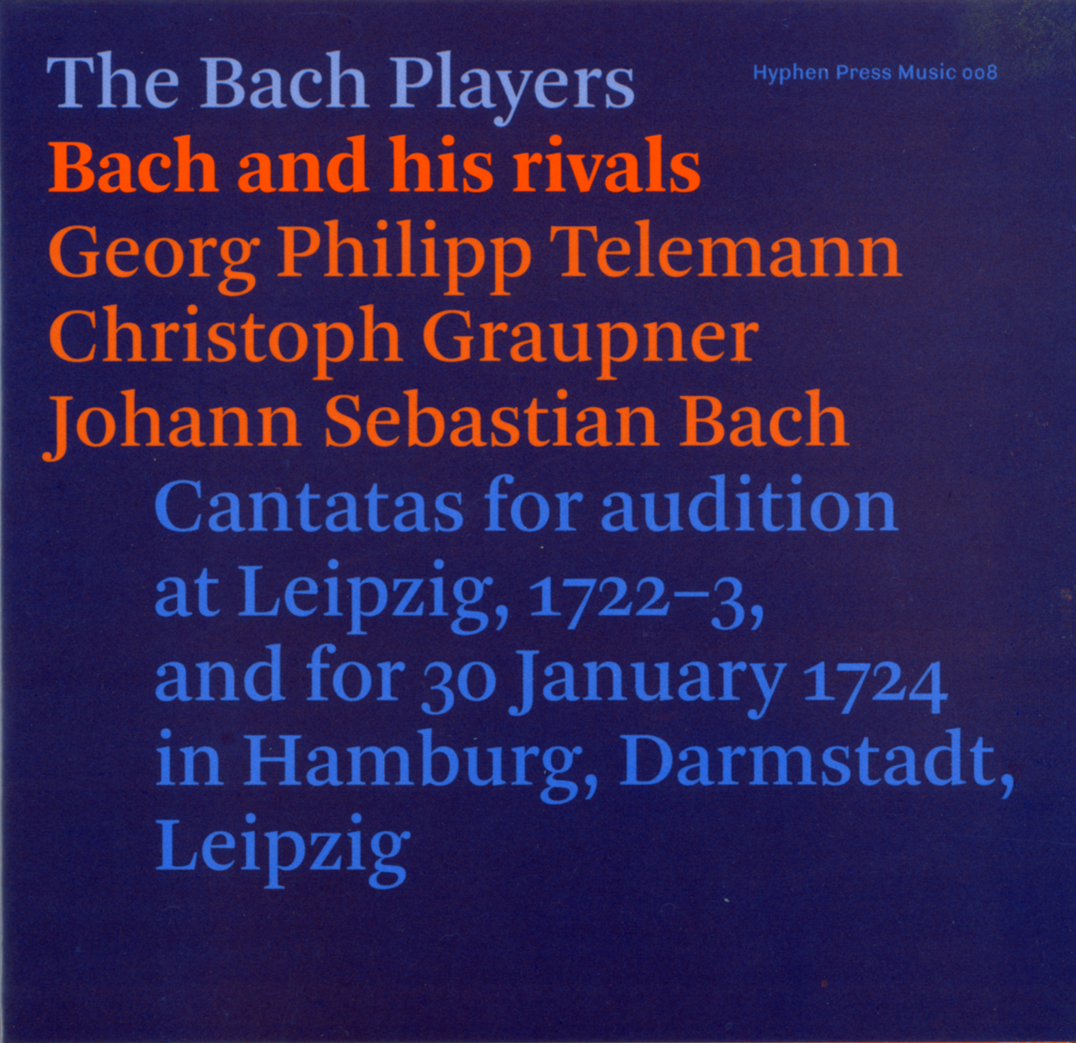
Bach and his rivals
The Bach Players
This double CD presents two sets of cantatas by three composers: Telemann, Graupner, and J.S. Bach. The first disc has cantatas composed in 1722–3 as audition pieces for the job of Kantor at the Thomasschule in Leipzig. Both Telemann and Graupner were attractive and likely candidates, as these works prove. Bach – despite his subsequent glory – was the outsider. The second disc gives us cantatas by the same three composers a year later, composed for the same Sunday, 30 January 1724. The gospel reading for that day tells the story of Jesus stilling the storm at sea: the music reaches dramatic heights. These cantatas, with the addition of instrumental works by Telemann and Graupner, paint a substantial picture of music in Germany at that moment.
Find out more and buy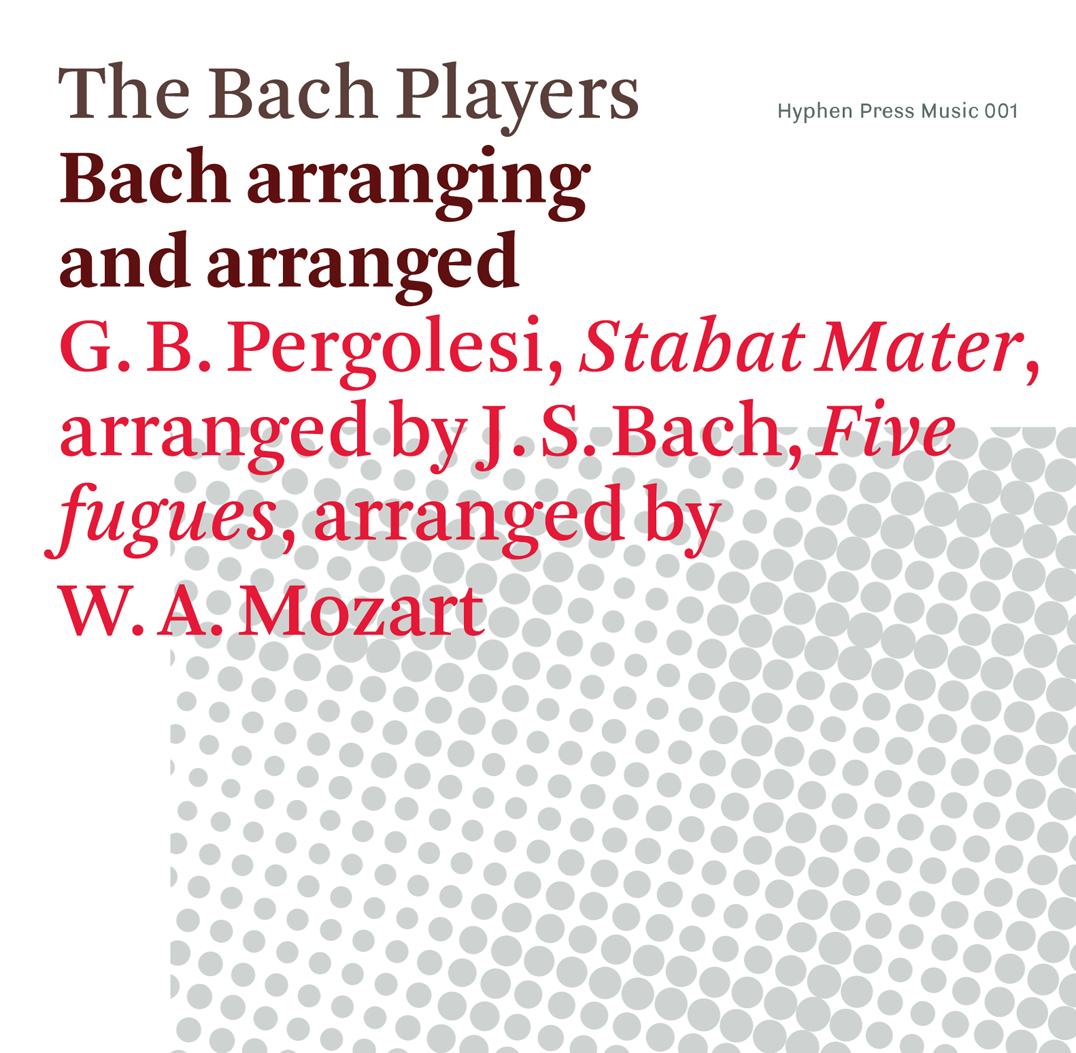
Bach arranging and arranged
The Bach Players
What happens when great composers arrange each other’s works? J.S. Bach gave Pergolesi’s Stabat Mater a new text and a new viola part, making a fresh piece that speaks both of Germany and Italy. This performance features singers Rachel Elliott and Sally Bruce-Payne.
Mozart gave string players the pleasure of playing fugues from the Well-tempered Clavier II – fresh arrangements by The Bach Players complete the set of all the four-part fugues from this work.
Find out more and buy
Bach’s library
The Bach Players
This is a selection of pieces that J.S. Bach had in his library and which provide a context for his celebrated Orchestral Suite in B minor. Some of these works J.S. Bach copied in his own hand (Dieupart, Johann Bernhard Bach, and Steffani), and one exists in his brother Christoph’s hand (Alcide by Marais, in arrangement for harpsichord). The Bach Players provide a perfect entertainment and throw light on the importance of the French style to J.S. Bach and his German contemporaries.
Find out more and buy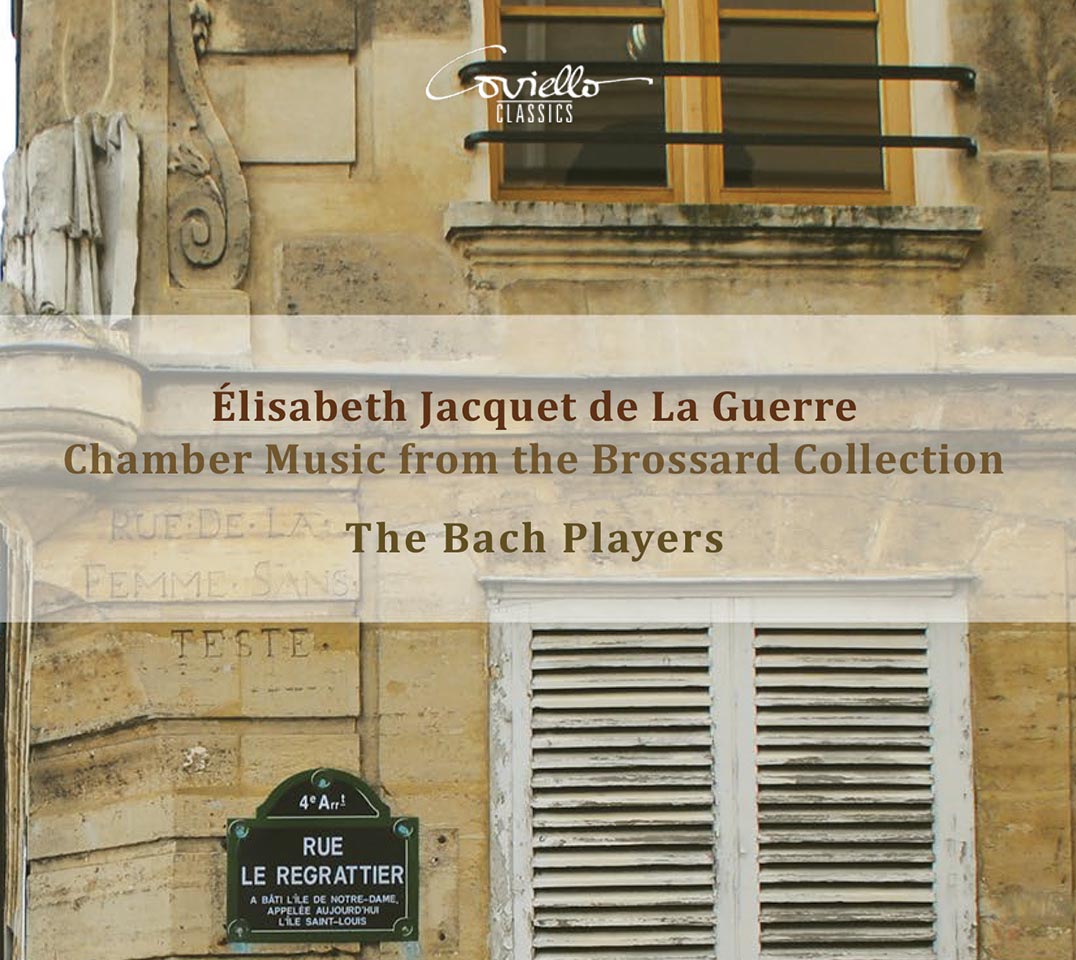
Élisabeth Jacquet de La Guerre: chamber music from the Brossard collection
The Bach Players
Élisabeth Jacquet de La Guerre (1665–1729) is often introduced as a ‘woman composer’, but as the music here shows, she transcends any category. Her work displays drama, intensity, and great artistic subtlety. No wonder that Évrard Titon du Tillet in his Parnasse français (1732) gave her a place on Mount Parnassus alongside Lully, Marais, Louis and François Couperin. A child prodigy, as a teenager she enjoyed a place as a harpsichordist in the court of Louis XIV. Later she composed works for public performance, including ballet, opera, and cantatas, as well as more private chamber music.
Find out more and buy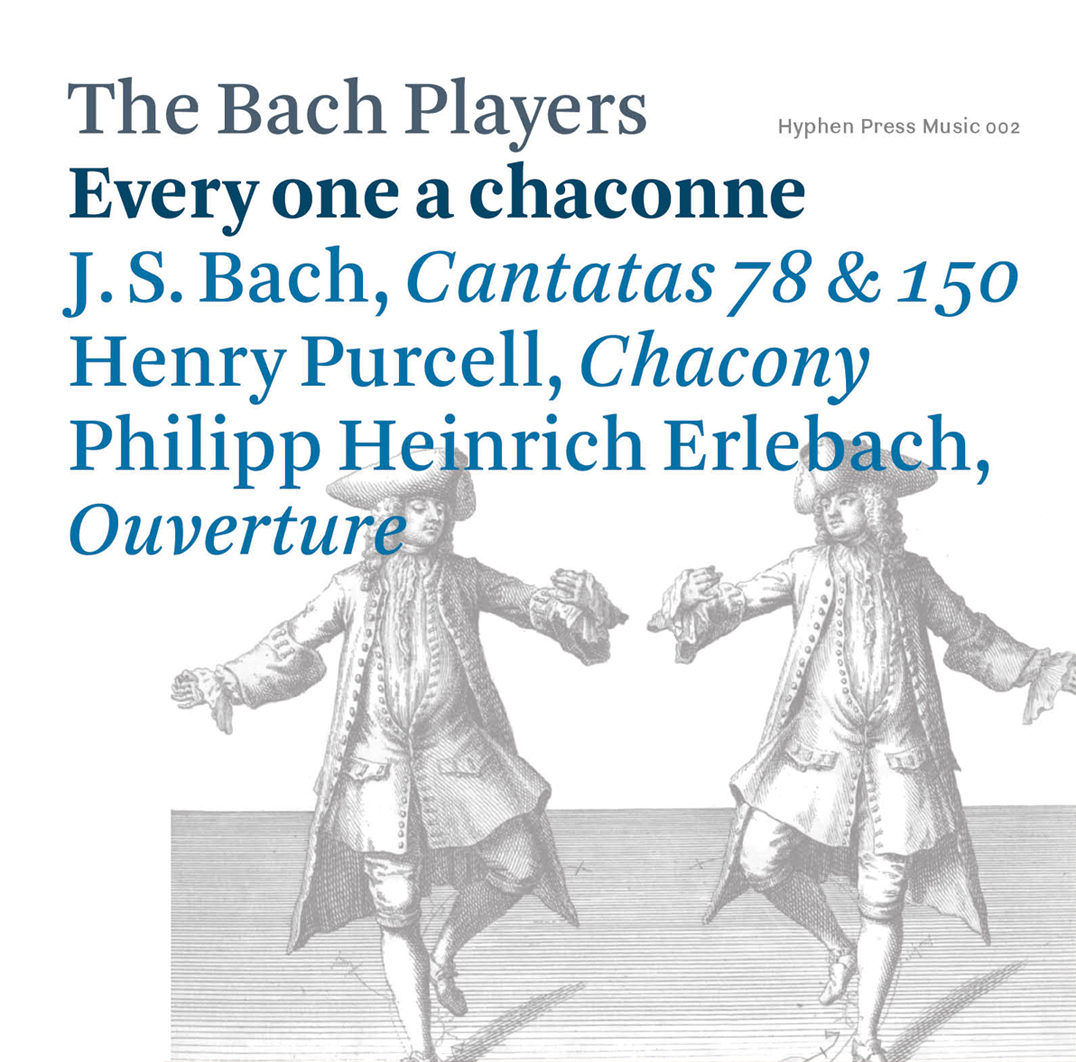
Every one a chaconne
The Bach Players
This programme is centred on the chaconne: you will hear how Henry Purcell and J.S. Bach join hands in this much-loved dance form of the seventeenth and eighteenth centuries. Of the few works of Philipp Heinrich Erlebach that survive, we perform a suite that concludes with a chaconne. The two Bach cantatas are contrasting: BWV 150 is said to be Bach’s earliest surviving cantata, BWV 78 was composed in Leipzig at the height of his career.
Out of print. Find out more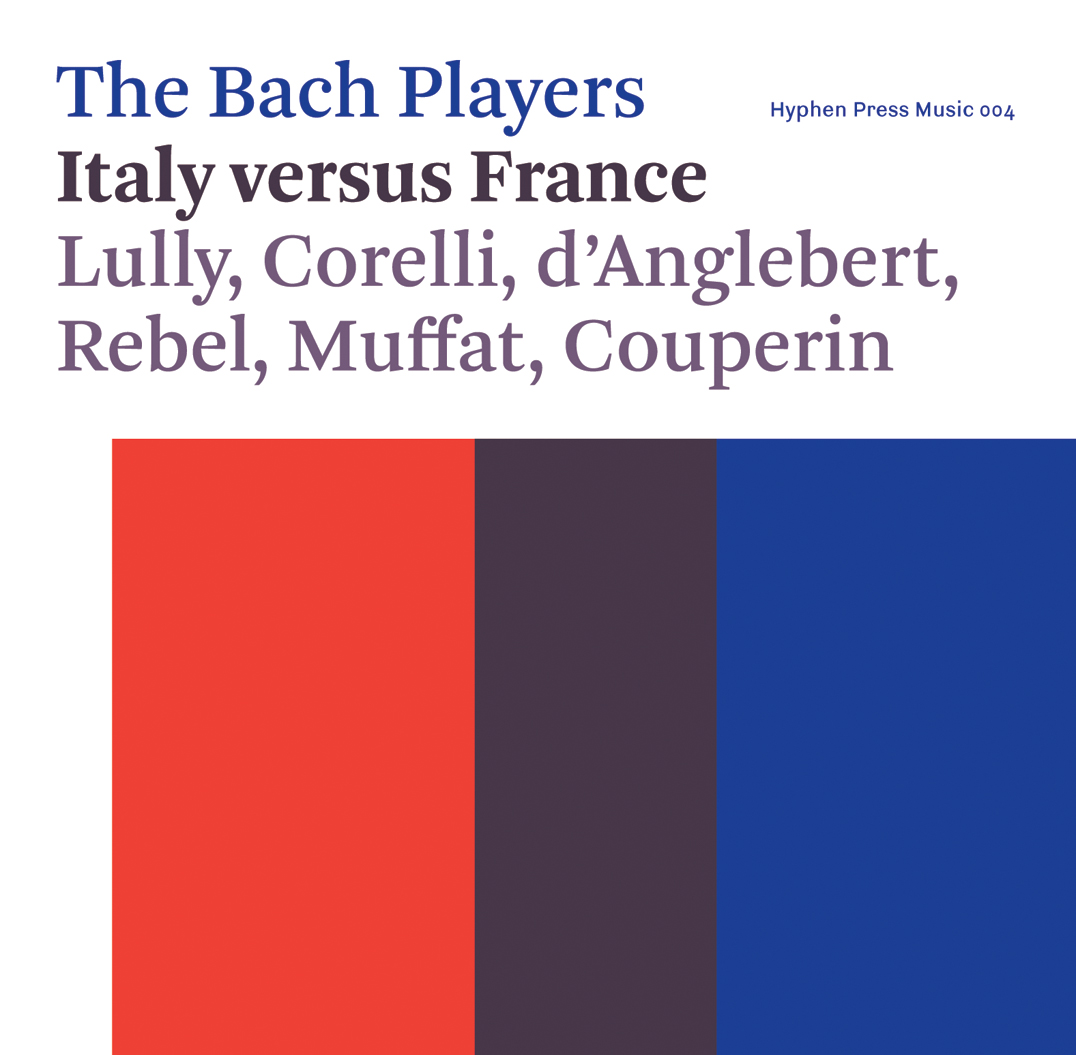
Italy versus France
The Bach Players
Italian or French? Jean Baptiste Lully and Arcangelo Corelli were the champions of these two musical styles – and the main subjects of the many attempts to establish which style was better. Or could the two styles be united? This programme paints a musical picture of the later seventeenth and early eighteenth centuries in Europe, through the music of Corelli, Lully, and their contemporaries. Chief among the reconcilers was the organist and composer Georg Muffat. German but of Scottish ancestry, it was he who introduced both styles to Germany. Also included are Rebel’s homage to Lully and Couperin’s to Corelli. In this vivid recording The Bach Players bring history to life.
Find out more and buy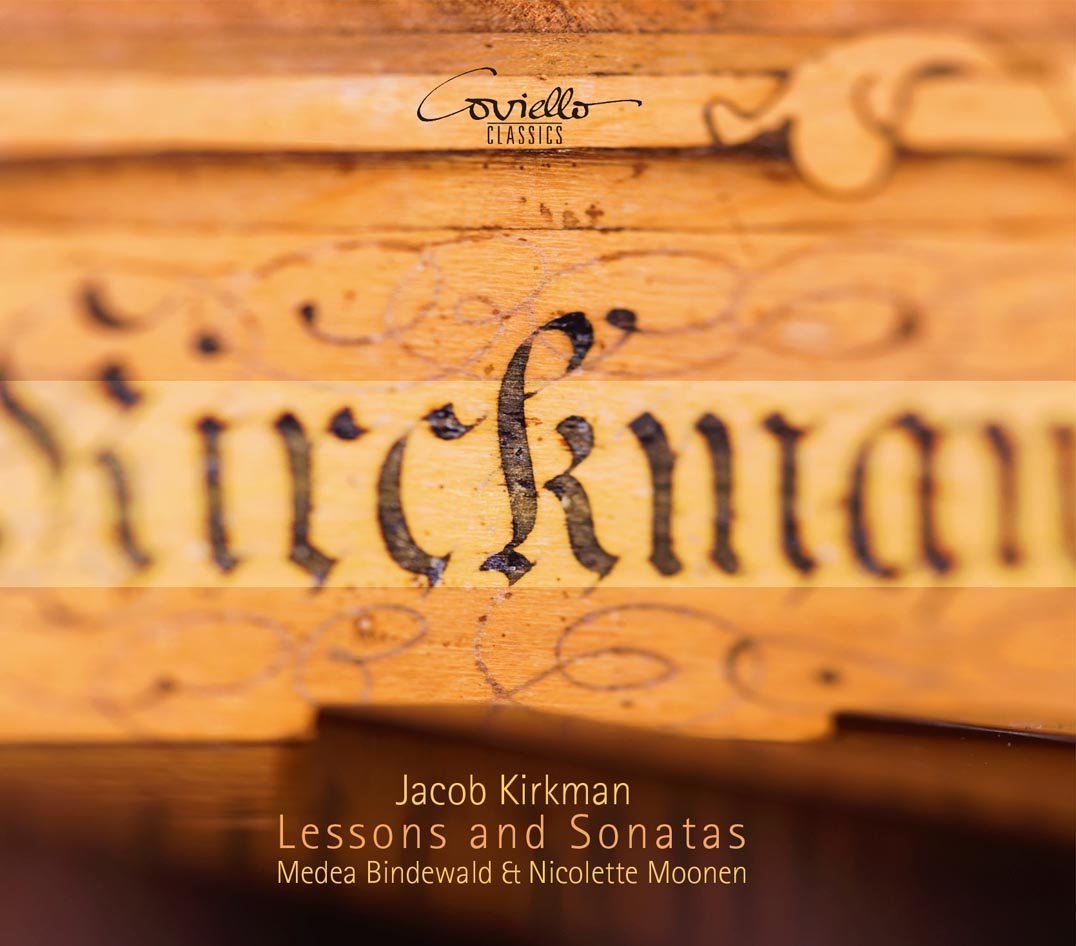
Jacob Kirkman: lessons and sonatas
COV 91616
This recording features the nearly forgotten composer Jacob Kirkman (1746–1812), a nephew of the famous London harpsichord maker of the same name. His delightful lessons and sonatas are representative of the musical taste in post-Handelian London. Medea Bindewald plays a 1756 double manual harpsichord by the composer’s uncle Jacob Kirckman and a 1795 square piano by Broadwood & Son, both from the Finchcocks Collection in Kent, England. The variety of different sounds presented on this CD is enhanced by including Kirkman’s works written in the unique and nowadays much-neglected genre of keyboard repertoire with a violin accompaniment, played here by Nicolette Moonen. This is one of the very last recordings made at Finchcocks Musical Museum before its closure.
Find out more and buy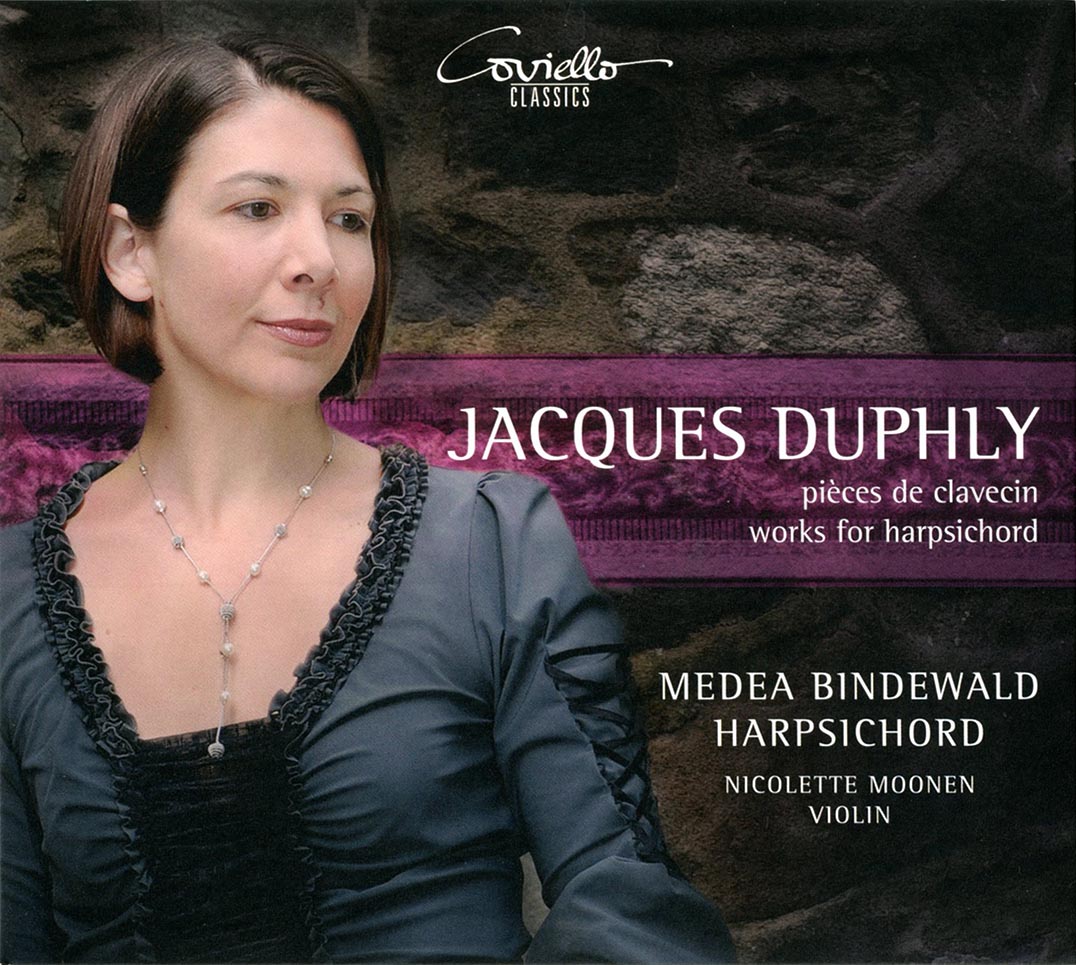
Jacques Duphly: pièces de clavecin
Medea Bindewald & Nicolette Moonen
Paris in the mid eighteenth century: the harpsichord was one of the leading solo instruments in the court of Versailles and in the salons of the nobility and bourgeoisie; there was a boom in the manufacture of large, sonorous harpsichords. In 1742 the former organist Jacques Duphly settled in Paris and, from then on, devoted himself exclusively to this instrument. He rapidly gained a reputation as one of the finest players and teachers in the city, praised for his delicate touch and graceful playing style.
Find out more and buy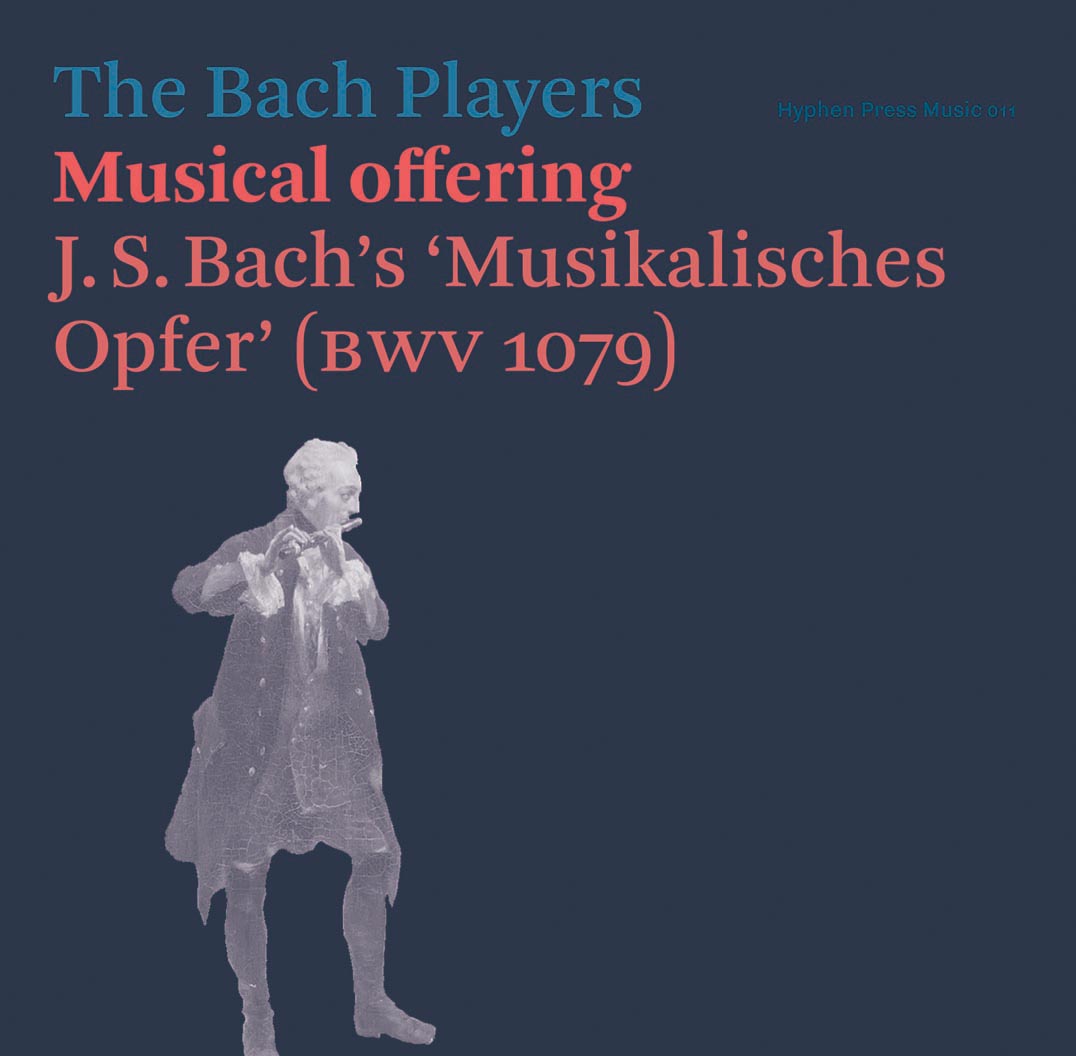
Musical offering
The Bach Players
‘The orator and the musician have essentially the same aim: namely, to make themselves masters of the heart of their listeners, to arouse or still their passions, and to transport them now to this sentiment, now to that. Thus it is to the advantage of both, if each has some knowledge of the duties of the other.’ (Johann Joachim Quantz)
This recording brings together two wonderful demonstrations of the art of rhetoric: a trio sonata by Dieterich Buxtehude and J. S. Bach’s Musical offering. Bach’s work, written for and dedicated to the flute-playing Frederick the Great, is among his most haunting and enigmatic. The movements are played here not in the order often employed, but in a sequence that reflects their rhetorical unfolding.
Find out more and buy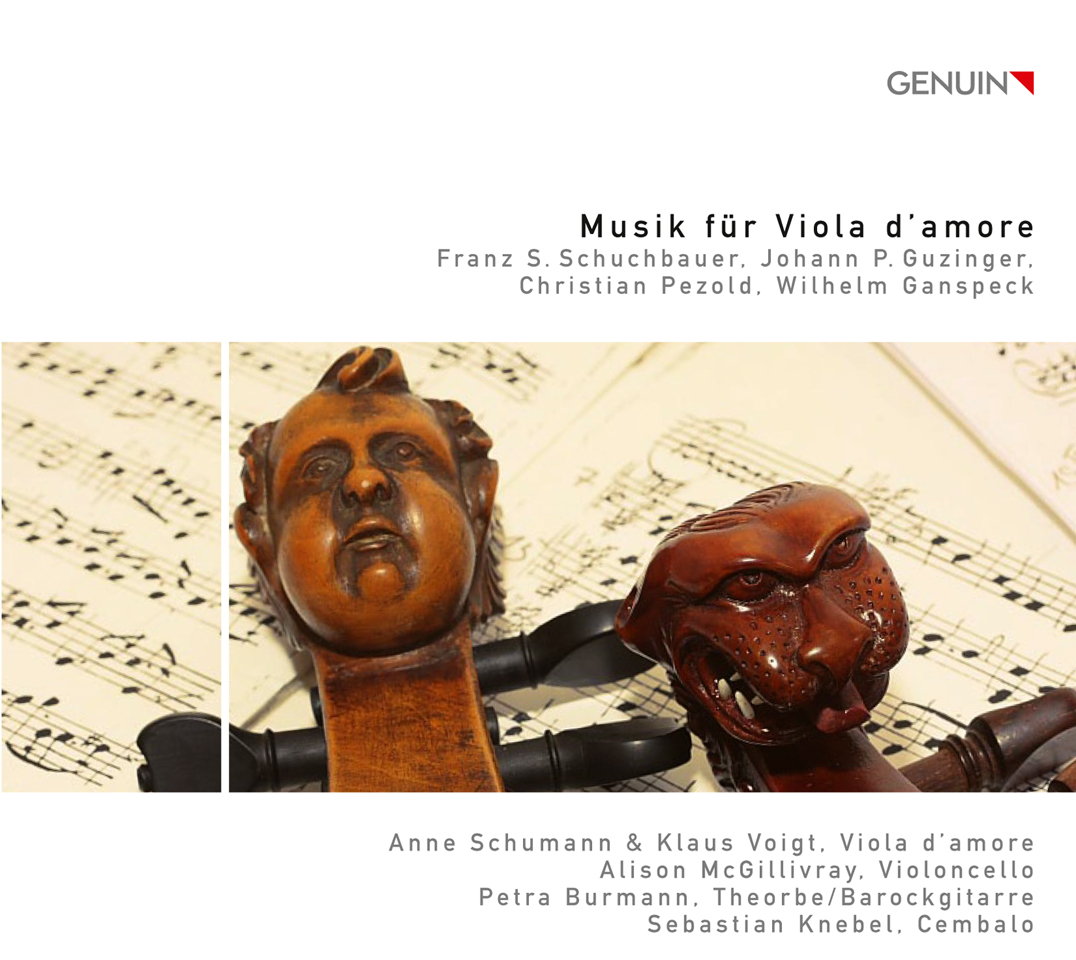
Musik für viola d’amore
Anne Schumann & Klaus Voigt
Simply put, the viola d’amore is a violin whose strings are underlaid by a set of resonating metal strings: when the bow is drawn across the main strings, these subsidiary strings are set in sympathetic motion, producing the characteristic silvery, glistening sound of the instrument. In the ‘age of the viola d’amore’ – from about 1680 to 1800 – this sound was highly prized: its yearning, aching quality provided an exact expression of the ‘naked, inflamed, fluttering heart’ of the ‘age of feeling’. This programme gathers ‘divertissements’ from southern Germany, largely from the collection of the Dresden concert master Georg Pisendel. As Anne Schumann writes, the viola d’amore is not an instrument for a virtuoso: it is for somebody who loves sound.
Find out more and buy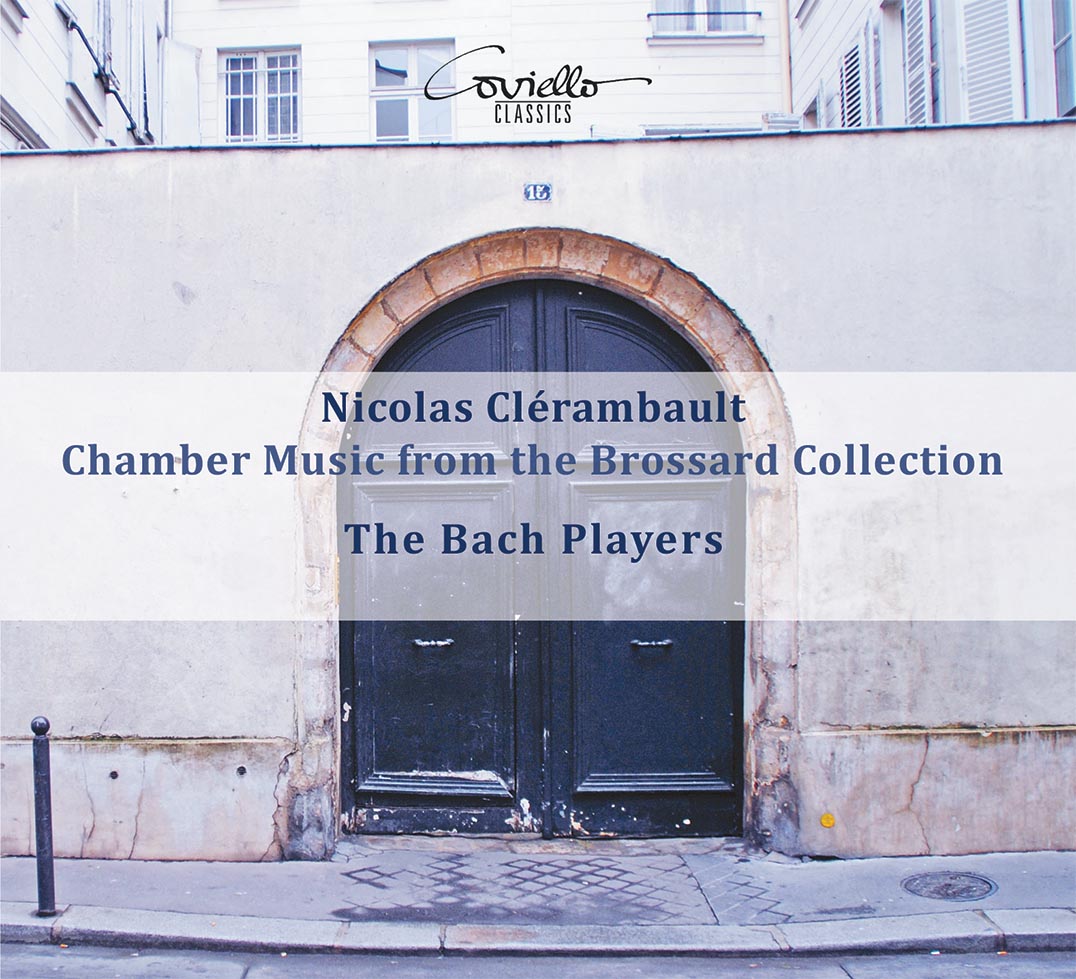
Nicolas Clérambault: chamber music from the Brosssard collection
The Bach Players
Nicolas Clérambault (1676–1749) is known as an organist and composer of many large-scale sacred and secular works in the France of Louis XIV and Louis XV – and he also wrote chamber music. This CD gathers chamber works that were collected and copied by the composer and theorist Sébastien de Brossard (1655–1730). These pieces were not published in Clérambault’s lifetime, perhaps because he was writing in the controversial Italian style. We owe their survival to Brossard.
Find out more and buy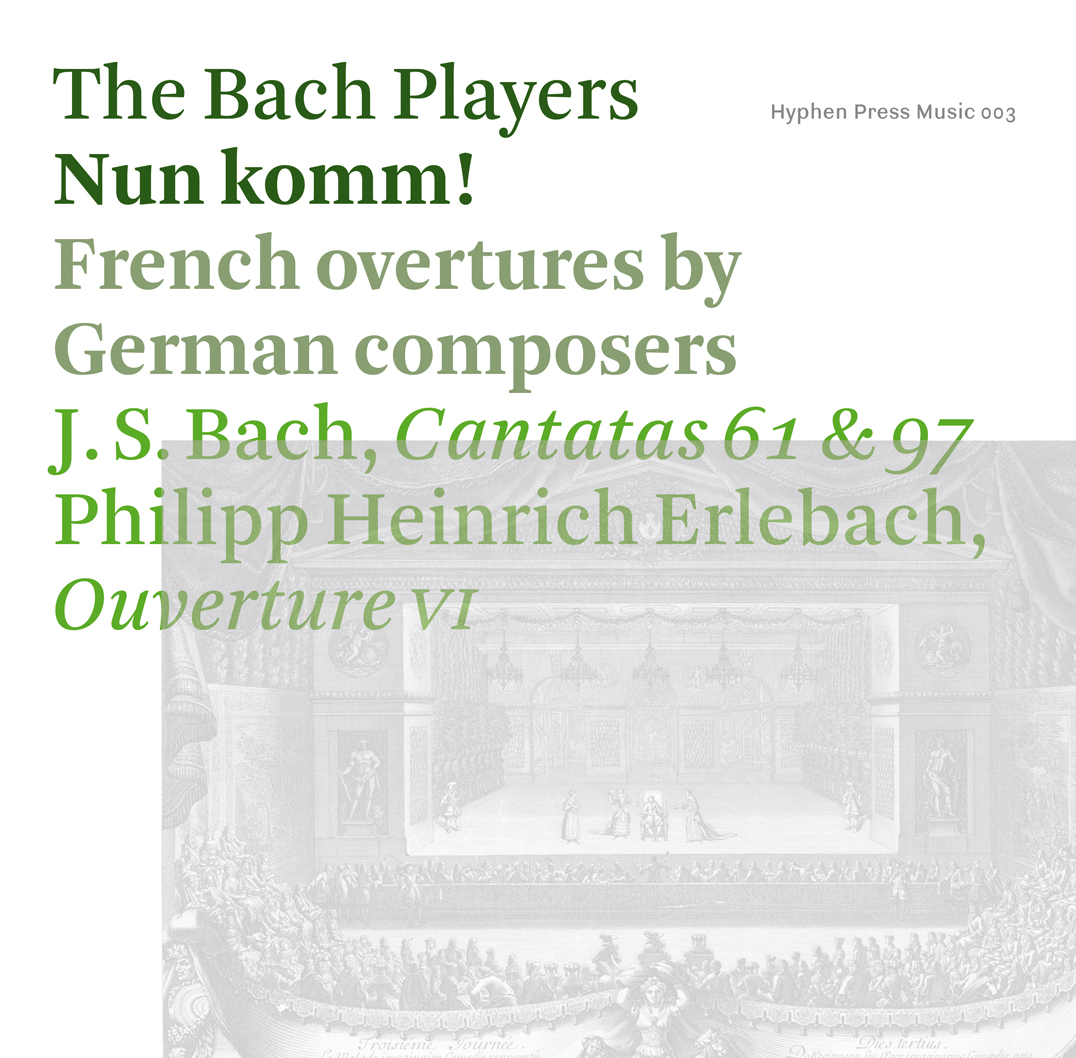
Nun komm! French overtures by German composers
The Bach Players
The Bach Players explore the form of the French overture in two cantatas by J.S. Bach: the thrilling Advent cantata ‘Nun komm der Heiden Heiland’ (BWV 61), from his Weimar years, and ‘In allen meinen Taten’ (BWV 97) from his later years in Leipzig. They play a dance suite by Philipp Heinrich Erlebach, opening with another French overture. To complete the disc, Heinrich Isaac’s beautiful ‘Innsbruck ich muß dich lassen’, which provides the choral melody for cantata 97, is sung a capella, and is played in two instrumental settings.
Find out more and buy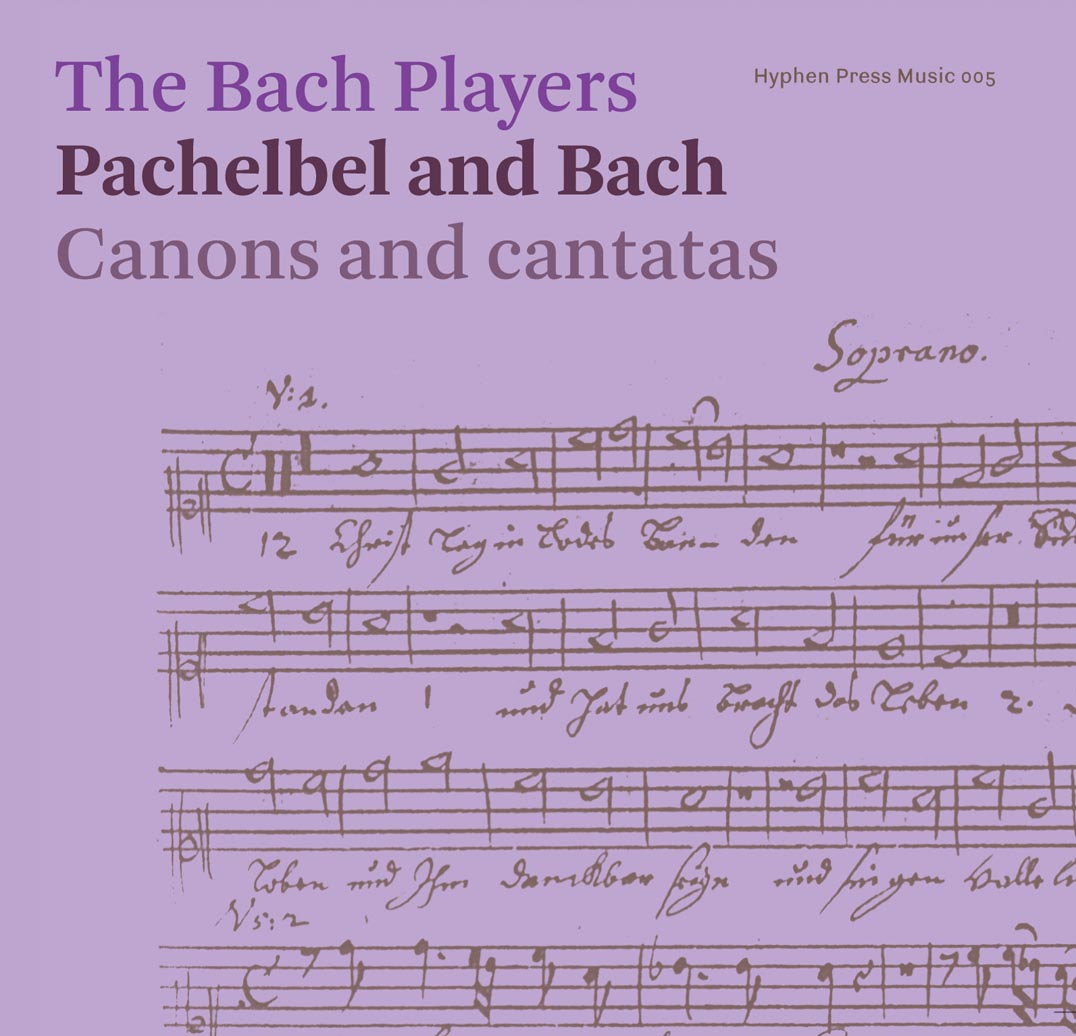
Pachelbel and Bach: canons and cantatas
The Bach Players
This is a double CD. Each disc presents cantatas set by both Pachelbel and Bach: ‘Christ lag in Todesbanden’ and ‘Was Gott tut, das ist wohlgetan’. In the first case the older composer’s influence on Bach’s writing is very clear; in the second, we hear the mature Bach. Also on the discs: Pachelbel’s beautiful Canon and two of his sacred concertos; J.S. Bach’s stirring cantata for solo alto voice ‘Widerstehe doch der Sünde’, and an arrangement of the lesser known canons from the Goldberg Variations.
Find out more and buy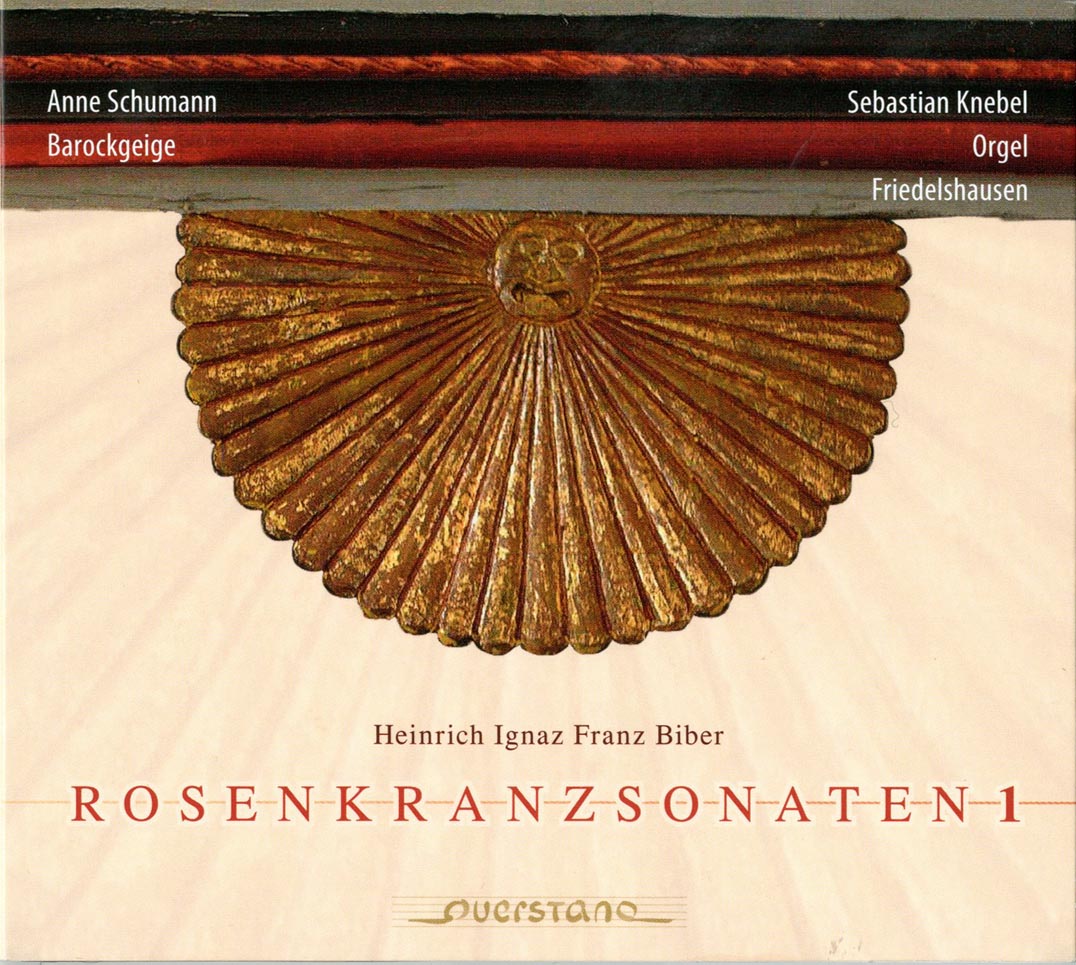
Rosenkranzsonaten 1
Anne Schumann & Sebastian Knebel
Heinrich Ignaz Franz Biber (1644–1704) wrote his Rosary (or Mystery) Sonatas when he was working in the service of the Archbishop Max Gandolph von Kuenburg in Salzburg, to whom they are dedicated. These rich and complex pieces may now be part of a Baroque violinist’s repertoire, but they have never been recorded like this before. Anne Schumann and Sebastian Knebel play the pieces in the village church of Friedelshausen (Thüringia) and we hear the violin and the church’s organ in their full glory – the sound filling the space of the building. Schumann sees the Rosary sonatas as a collection of short stories: ‘With a violin I tell and paint the secrets of the rosary. The stories are meant to please but also stir, and encourage prayer and meditation.’ This is the first of a set of three CDs of the 15 Rosary sonatas (and the Passacaglia for solo violin), each recorded in a different Thüringian church, and each including a work for organ that shows the unique qualities of these church instruments.
Find out more and buy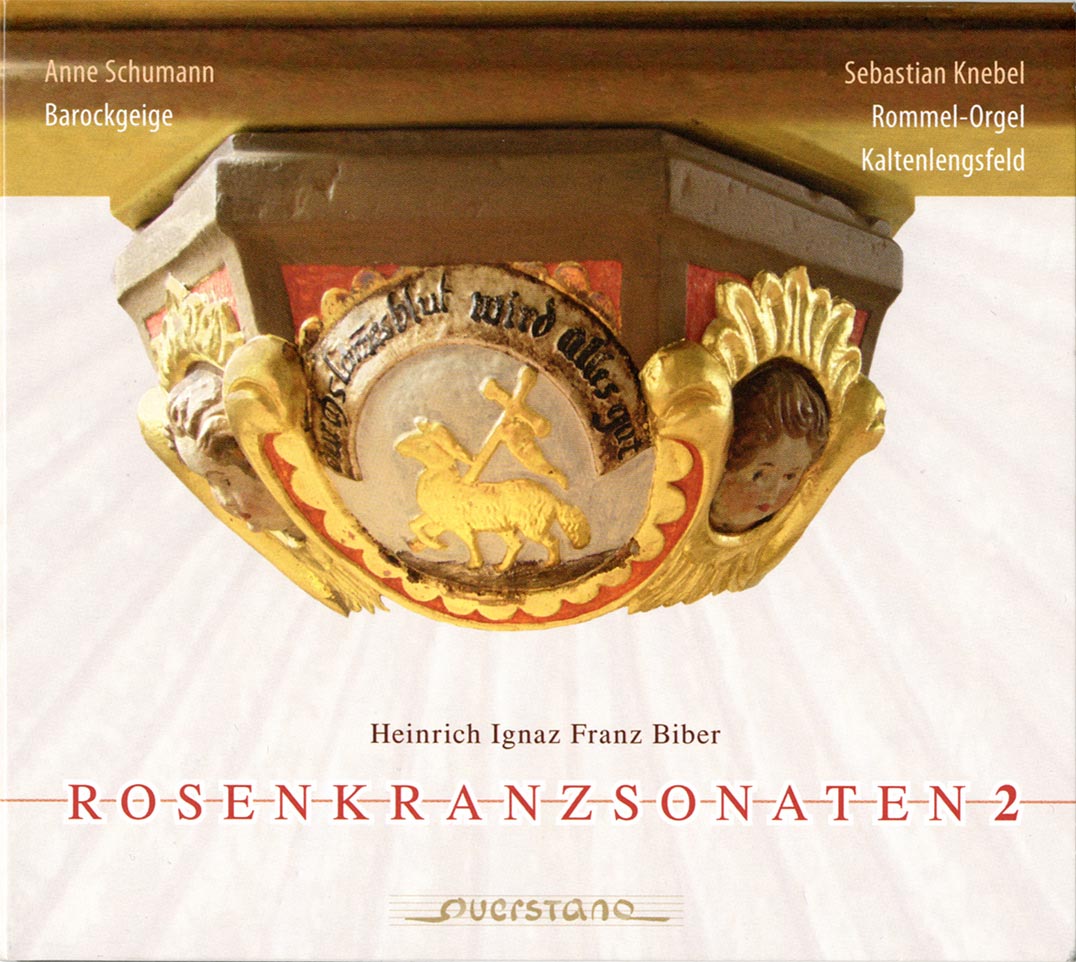
Rosenkranzsonaten 2
Anne Schumann & Sebastian Knebel
Heinrich Ignaz Franz Biber (1644–1704) wrote his Rosary (or Mystery) Sonatas when he was working in the service of the Archbishop Max Gandolph von Kuenburg in Salzburg, to whom they are dedicated. These rich and complex pieces may now be part of a Baroque violinist’s repertoire, but they have never been recorded like this before. Anne Schumann and Sebastian Knebel play the pieces in the village church of Kaltenlengsfeld (Thüringia) and we hear the violin and the church’s organ in their full glory – the sound filling the space of the building. Schumann sees the Rosary sonatas as a collection of short stories: ‘With a violin I tell and paint the secrets of the rosary. The stories are meant to please but also stir, and encourage prayer and meditation.’ This is the second of a set of three CDs of the 15 Rosary sonatas (and the Passacaglia for solo violin), each recorded in a different Thüringian church, and each including a work for organ that shows the unique qualities of these church instruments.
Find out more and buy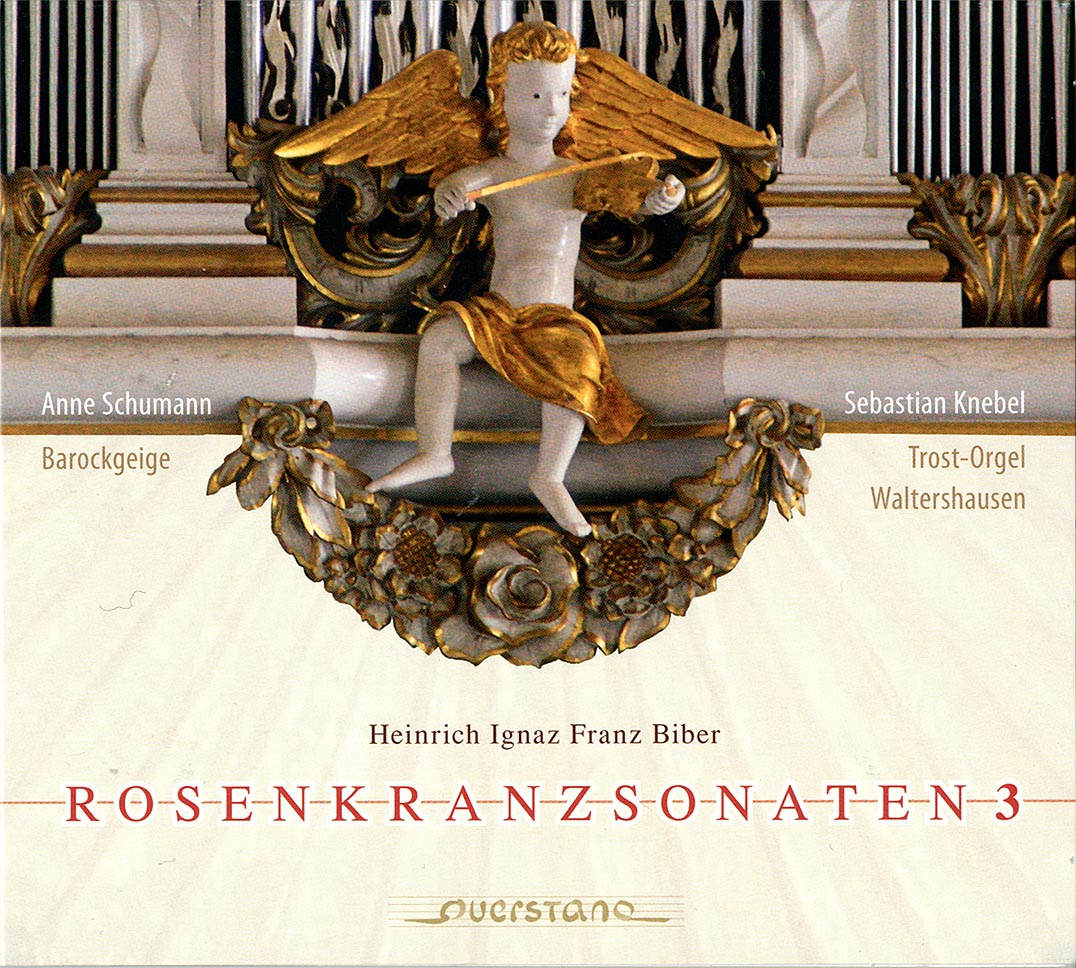
Rosenkranzsonaten 3
Anne Schumann & Sebastian Knebel
Heinrich Ignaz Franz Biber (1644–1704) wrote his Rosary (or Mystery) Sonatas when he was working in the service of the Archbishop Max Gandolph von Kuenburg in Salzburg, to whom they are dedicated. These rich and complex pieces may now be part of a Baroque violinist’s repertoire, but they have never been recorded like this before. Anne Schumann and Sebastian Knebel play the pieces in the village church of Waltershausen (Thüringia) and we hear the violin and the church’s organ in their full glory – the sound filling the space of the building. Schumann sees the Rosary sonatas as a collection of short stories: ‘With a violin I tell and paint the secrets of the rosary. The stories are meant to please but also stir, and encourage prayer and meditation.’ This is the third of a set of three CDs of the 15 Rosary sonatas (and the Passacaglia for solo violin), each recorded in a different Thüringian church, and each including a work for organ that shows the unique qualities of these church instruments.
Find out more and buy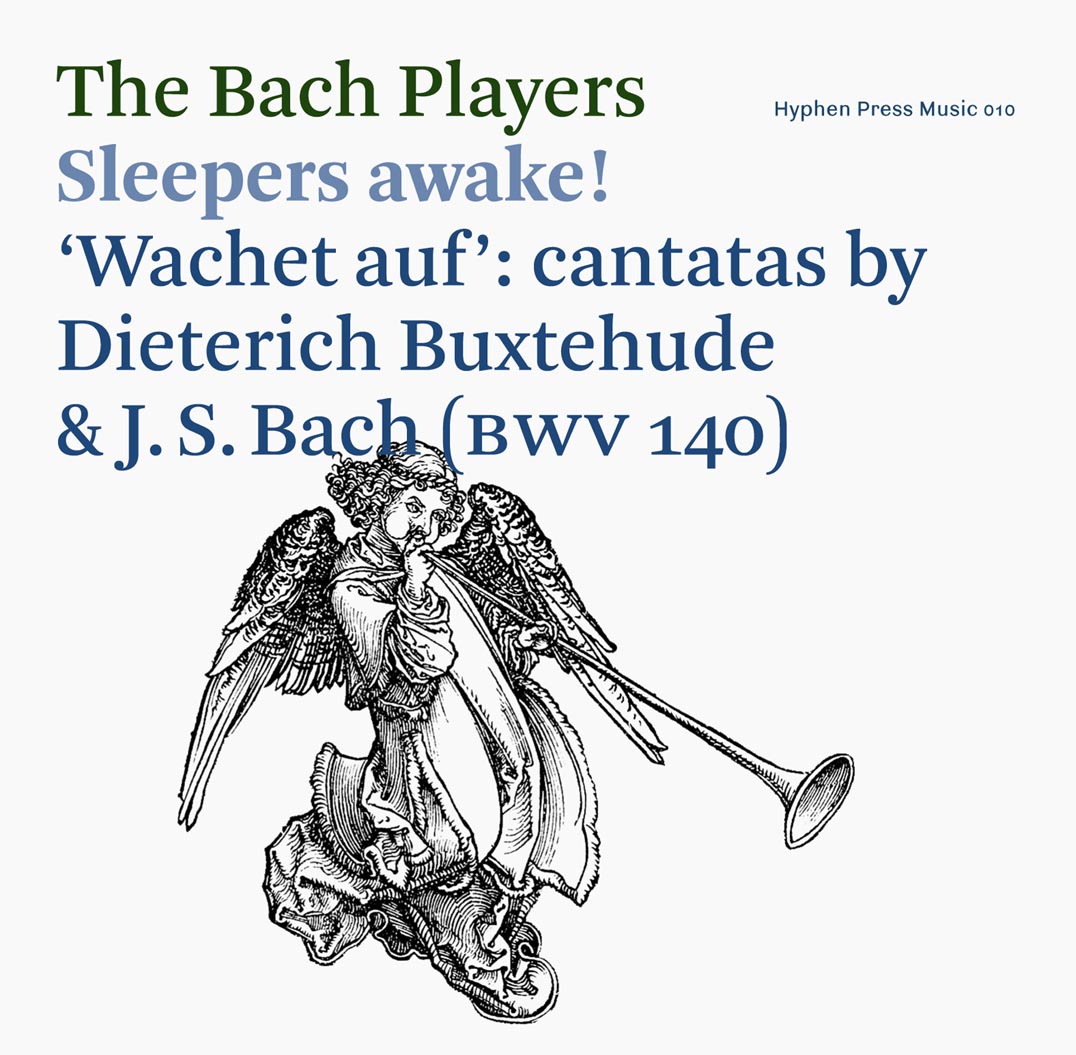
Sleeepers awake!
The Bach Players
Behind J.S. Bach stood Dietrich Buxtehude, the pre-eminent German composer of the seventeenth century and now unfairly neglected. In this recording The Bach Players reunite the two composers, featuring their settings of the text ‘Wachet auf, ruft uns die Stimme’ (Sleepers awake! The voice calls us). The text uses the parable, from Matthew’s gospel, of the wise and foolish virgins at the wedding feast. One of Buxtehude’s settings (BuxWV 100) is remarkable for its four violin parts, used as if they were trumpets. Also on the disc: Buxtehude’s glorious chaconne-form sacred concerto ‘Quemadmodum desiderat cervus’, for solo tenor voice and two violins, and a trio sonata for two violins, viola da gamba, and harpsichord. A sonata by Erlebach gives us the chance to hear the piccolo violin, which Bach deploys in his ‘Wachet auf’. As always in the Bach Players’ recordings, the sequence of pieces is imaginatively conceived and full of variety.
Find out more and buy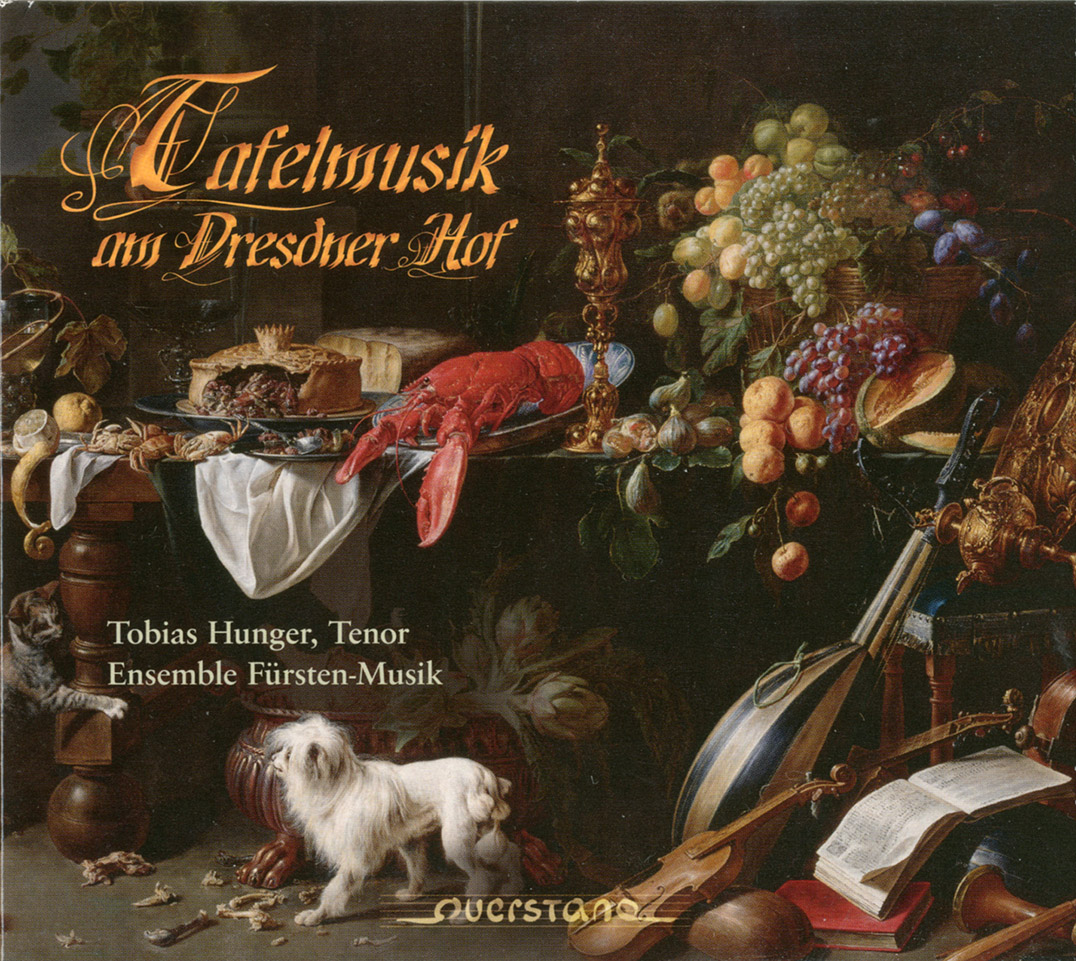
Tafelmusik am Dresdner Hof
Ensemble Fürsten-Musik
This is the first recording of all six suites of the Musicalischen Taffel-Bedienung by Johann Wilhelm Furchheim, an important violinist at the court in Dresden. Furchheim, who knew Heinrich Schütz, became the Konzertmaster of the Dresdner Hofkapelle, working alongside famous violinist such as Johann Jakob Walter and Johann Paul Westhoff. Most of Furchheim’s compositions are lost, but among the surviving manuscripts, the trio sonata in E minor is an extraordinary piece, which shows Furchheim as a composer for virtuoso violins. The CD also includes 4 songs by Adam Krieger, a friend of Furchheim, who wrote the ritornelli of those songs after Krieger’s early death.
Find out more and buy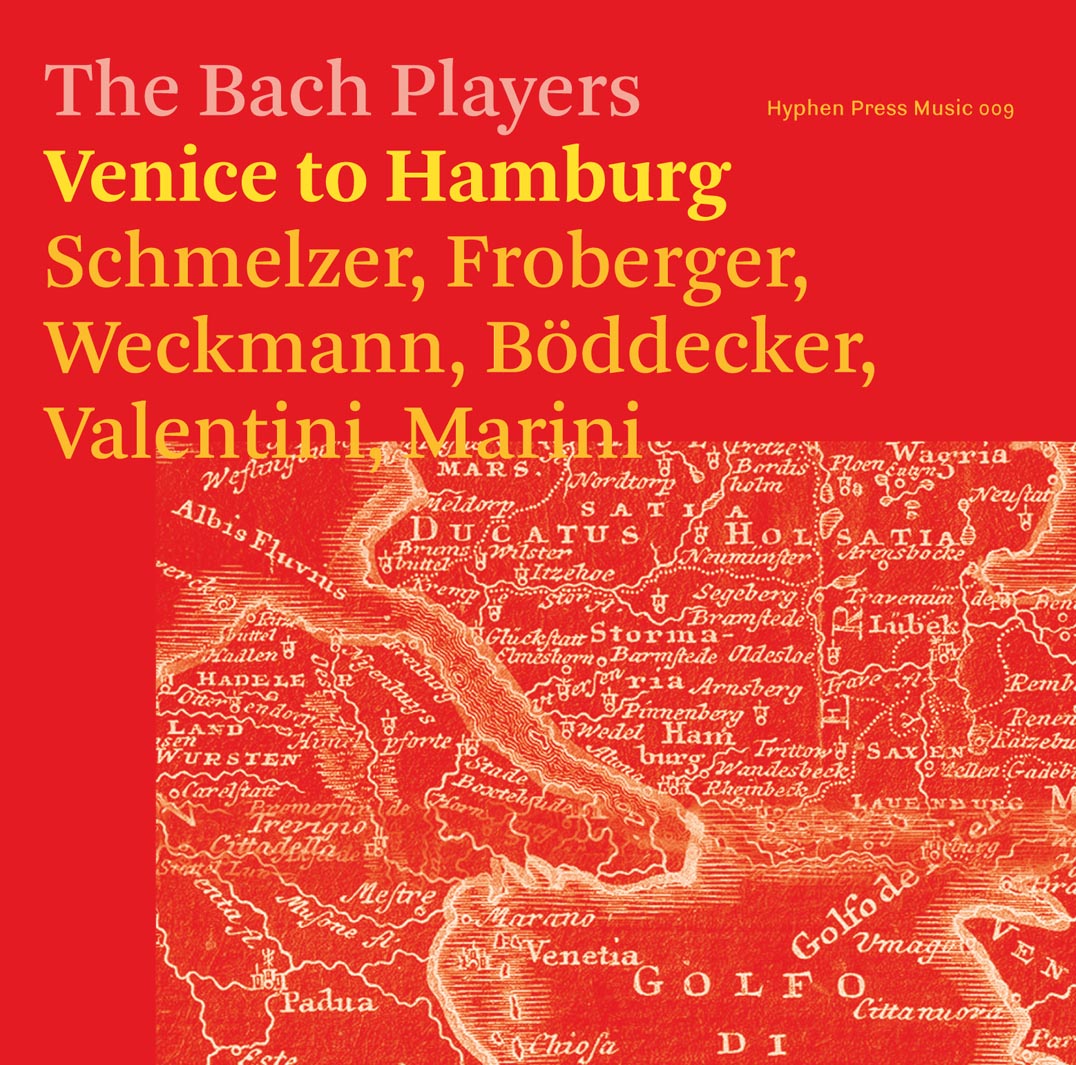
Venice to Hamburg
The Bach Players
Hear how the Italian ‘stylus fantasticus’ crossed the Alps to the centres of Habsburg culture, then on north to Hamburg, with music by Valentini, Schmelzer, Weckmann, and others. Venice to Hamburg centres on pieces for an unusual combination of instruments – violin, cornetto, sackbut (trombone), dulcian (bassoon), and basso continuo – improvisatory in character, and jazz-like also in the way that each instrument is in turn given a solo spot. A warning: this CD contains ear-worms!
Find out more and buy